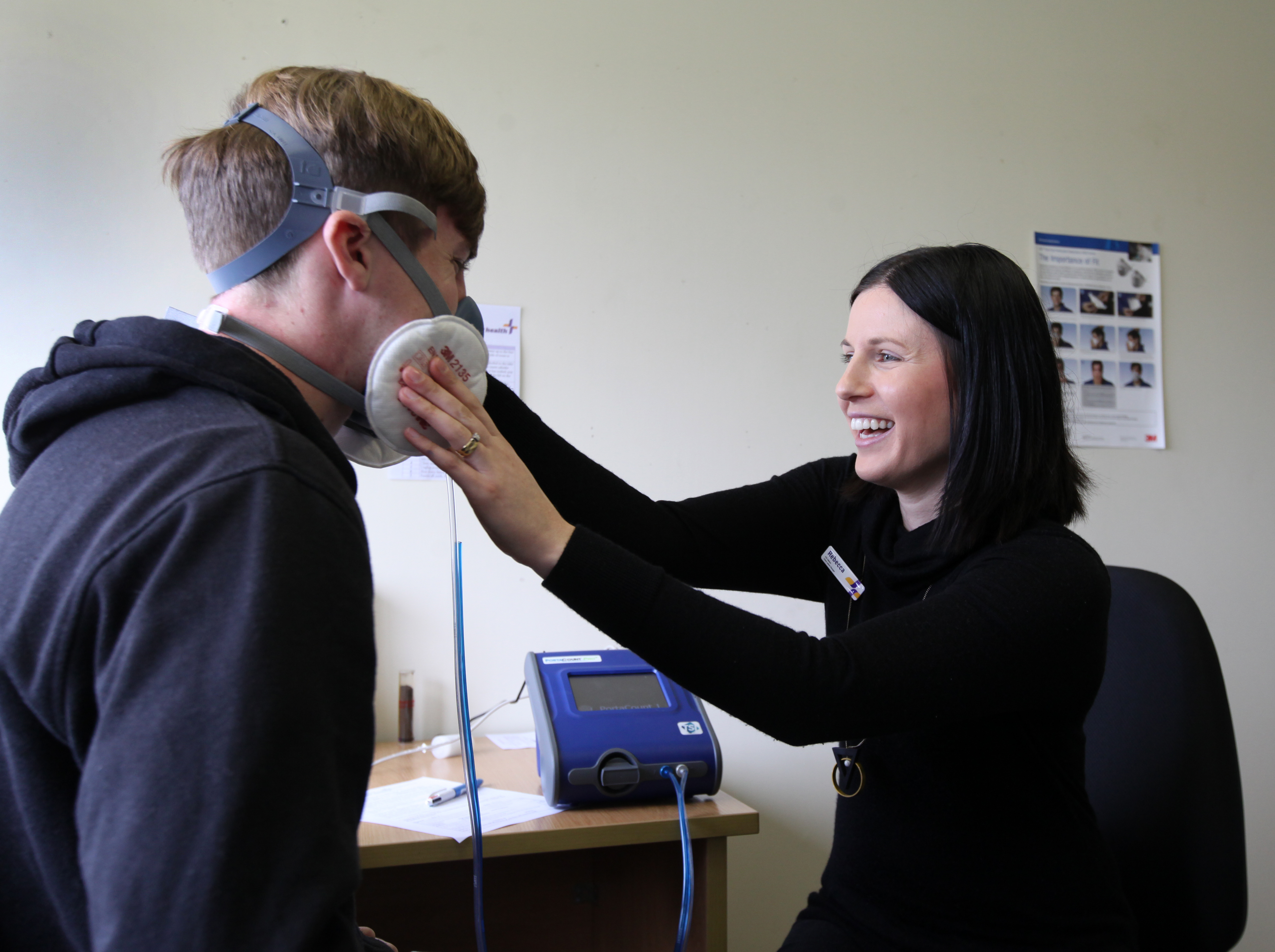Having an appropriate fit test completed for your workers who wear respirators at work is a necessary obligation of employers as detailed in AS/NZS 1715:2009. Guidance sheets published by WorkSafe NZ make it clear that fit testing is a necessary step in minimising the risk of ill-health of workers who wear respiratory protection for their job and is something WorkSafe are educating PCBUs on.
The quantitative method is the preferred and most accurate method of respirator fit testing. Quantitative fit testing measures the particulates inside the respirator in comparison with the particulates in the room where the fit testing is being done. As a result of these two measurements a ratio is determined and if the result is over a certain ratio for the mask type a good fit can be confirmed. A good fit ensures the worker will get maximum protection from the respirator.
Our quantitative fit testing is conducted using a state-of-the-art PortaCount Pro+ machine. The fit test itself is done by the wearer undertaking a number of non-strenuous exercises with the respirator on and connected to the PortaCount. The PortaCount measures the number of particulates, does a number of checks and balances and determines, by a Fit Factor result, just how good the fit is.
Each appointment for a quantitative fit test takes about half an hour and this includes educating the user on how to use, store, clean and inspect the respirator. The training aspect of the appointment is invaluable.
Remember that every persons facial features are different, therefore, one respirator model or size will not fit everyone. To avoid costly errors in purchasing the wrong sized respirator get the fit test done first and we can advise the correct size respirator to obtain in your preferred model.
Respirator fit testing must be completed:
- for all respirators that rely on the seal of the facepiece against the face (fullface, halfface, disposable)
- prior to respirator issue
- at least annually
- whenever there are changes in the wearer's facial characteristics (excessive weight change, loss of teeth, etc)
Rebecca Dillon, one of Working for Health's Health and Safety Advisers, undertakes a fit test using the PortaCount Pro fit testing machine.
